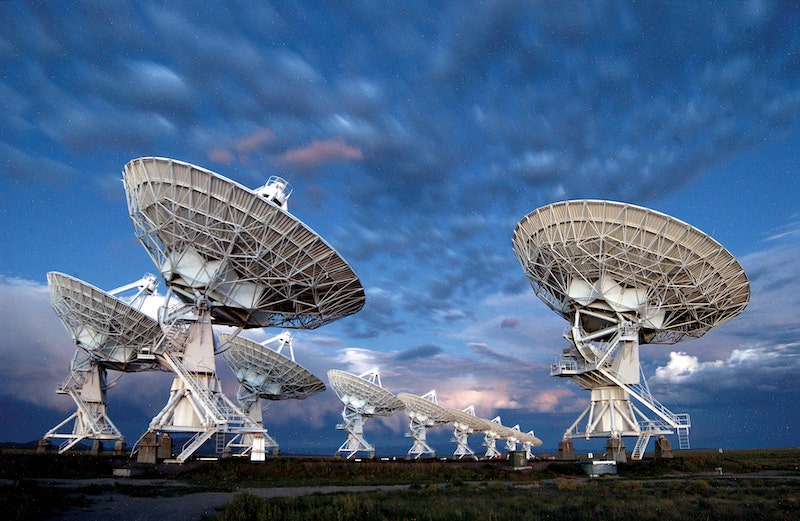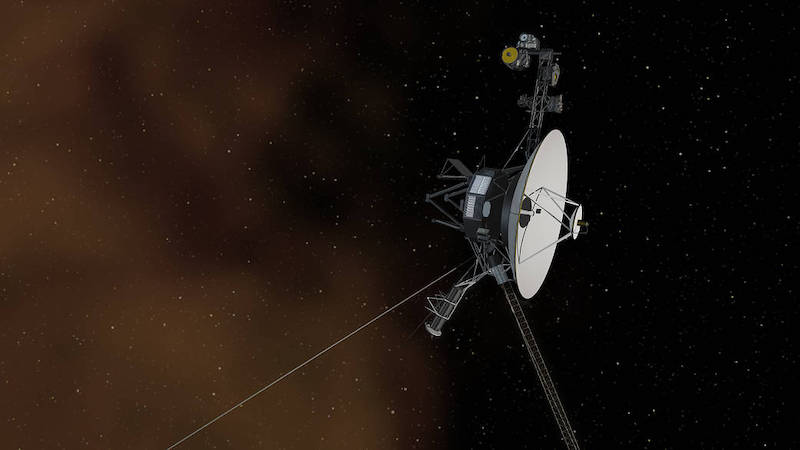
Are there alien civilizations out there among the stars? We don’t know. But this week (May 1, 2023), the SETI Institute announced that one of the world’s most powerful radio telescope arrays is joining the search. The Very Large Array or VLA – a huge radio telescope array in central New Mexico, on the Plains of San Agustin – is now collecting data that will help astronomers search for extraterrestrial radio signals, if any exist.
The SETI Institute is leading the new project, in collaboration with the National Radio Astronomy Observatory (NRAO) and the Breakthrough Listen initiative.
COSMIC joins SETI
For its new role in SETI, the Very Large Array is using a new processing system called Commensal Open-Source Multimode Interferometer Cluster (COSMIC). Paul Demorest, scientist and group lead for VLA/ VLBA science support at the National Radio Astronomy Observatory stated:
COSMIC operates commensally, which means it works in the background using a copy of the data astronomers are taking for other scientific purposes. This is an ideal and very efficient way to get large amounts of telescope time to search for rare signals.
Until now, scientists have used the Very Large Array for many types of radio astronomy. But this is the first time they will use it to look continuously for technosignatures such as artificial radio signals. Andrew Siemion, Bernard M. Oliver Chair for SETI at the SETI Institute, said:
The VLA is the go-to instrument for radio astronomers, but this is the first time we are using it in a wide-ranging and continuous search for technosignatures.
New SETI search a thousand times more comprehensive
Now, with the combination of COSMIC and the Very Large Array, SETI will increase its sensitivity about a thousand-fold. While previous searches have focused on “regular” types of radio signals, COSMIC can better detect ones not as typical, such as pulsed or transient signals.
Also, COSMIC can monitor an unprecedented number of radio frequencies, from about 10 million star systems. That’s pretty impressive.
The Very Large Array
The Very Large Array is a huge collection of 27 radio telescopes covering 23 square miles (60 square km) in New Mexico. It has already been actively surveying 80% of the sky since 2017. That project is called the Very Large Array Sky Survey, or VLASS. But now COSMIC will help narrow the focus of that search, sending a copy of the data into a special receiver with very narrow (one hertz wide) channels. Why use such narrow channels? Generally speaking, it’s because scientists say that any genuine artificial signals would likely be narrow-band, rather than wide-band as typically found in nature.

COSMIC finds Voyager 1
Indeed, COSMIC has already shown that it works. It has successfully detected the faint radio signal coming from NASA’s Voyager 1 since the beginning of this year. In fact, the detection clearly shows both the carrier and sidebands of the transmissions from the spacecraft. That is quite an accomplishment, since Voyager 1 is now about 15 billion miles (24 billion km) from Earth. Launched in 1977, it is the most distant human-made spacecraft ever sent out into deep space. As Jack Hickish, lead developer of COSMIC and founder of Real-Time Radio Systems Ltd., noted:
The detection of Voyager 1 is an exciting demonstration of the capabilities of the COSMIC system. It is the culmination of an enormous amount of work from an international team of scientists and engineers. The COSMIC system is a fantastic example of using modern general-purpose computer hardware to augment the capabilities of an existing telescope and serves as a testbed for technosignatures research on upcoming radio telescopes such as NRAO’s Next Generation VLA.
In addition, on August 24, 2022, the Allen Telescope Array (ATA) in Northern California also detected Voyager 1’s signal. The Allen Telescope Array is specifically designed to look for artificial radio signals.
The new collaboration is exciting for future SETI research, as Tony Beasley, Director of NRAO, noted:
The National Radio Astronomy Observatory is proud to partner with the SETI Institute in this exciting initiative. Partnerships bringing together world-class research instruments, private research institutes, and members of the public personally committed to forefront science, can enable new important discoveries.
Bottom line: As part of SETI, astronomers are now using the Very Large Array radio telescope array in a comprehensive new search for radio signals from alien civilizations.











